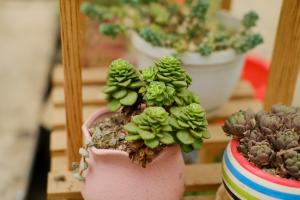Exploring the Phenomenon of Tomato Plant Leaf Color Change
Tomato plants, like many other plants, experience changes in their leaves' color at various stages of growth. These changes, while natural, can also indicate underlying problems that require attention. In this article, we will explore why tomato plant leaves change color and what it means for the health of the plant.
Understanding the Basics: Tomato Plant Leaves
Tomato plant leaves are an essential part of the plant that performs several crucial functions. They help the plant photosynthesize, regulate temperature, and protect it from harmful external factors. The leaves come in various shapes and sizes but are all typically green. The green color is due to the presence of chlorophyll, a pigment that enables the plant to absorb light energy and convert it into food.
The Reasons Behind Tomato Plant Leaf Color Changes
Tomato plants experience leaf color changes for various reasons. Some of these reasons indicate normal growth patterns, while others are indicative of underlying issues that need attention. Here are some of the reasons why tomato plant leaves change color:
Age
As tomato plants age, their leaves often begin to turn yellow and eventually wither and die. This process is a natural part of growth and is nothing to be concerned about. In fact, older leaves often contain fewer nutrients and may even become a drain on the plant's resources, making it necessary for the plant to shed them to conserve energy.
Nutrient Deficiencies
Yellowing leaves may indicate that the plant is deficient in certain nutrients, such as nitrogen, potassium, or magnesium. Lack of nitrogen, for example, is a common cause of yellowing in tomato plants. It is crucial to address nutrient deficiencies promptly to avoid stunted growth, reduced yields, or disease vulnerability.
Diseases and Pests
Diseases and pests can also cause discoloration and wilting of tomato plant leaves. For instance, viral, fungal, or bacterial infections can lead to yellowing, mottling, or necrosis (death) of the leaves. Similarly, pests like spider mites, whiteflies, or aphids can cause stress to the plant, leading to leaf discoloration and curling.
Environmental Factors
Tomato plant leaves can also change color due to environmental factors such as temperature or light. High temperatures, for example, can cause leaf scorching, which results in whitening or browning of the leaves. Insufficient or excessive light can also affect leaf color, making them fade or turn yellow respectively.
What Can You Do to Manage Tomato Plant Leaf Color Changes?
Now that you understand the reasons behind tomato plant leaf color changes, it is essential to take proactive measures to maintain your plant's health. Here are some tips on what you can do:
Monitor Soil pH and Nutrient Levels
Regularly test your soil pH and nutrient levels to ensure your tomato plants are getting the right amounts of nutrients. Adjust the soil pH and add fertilizers as necessary to address any deficiencies. You can also opt for soil amendments such as compost or organic matter to improve soil health and nutrient absorption.
Practice Good Sanitation Habits
Practice proper sanitation habits such as removing diseased or infested plant material and keeping your garden clean and weed-free. This can help prevent the spread of diseases and pests that can affect your tomato plants.
Provide Adequate Water and Light
Ensure your tomato plants get enough water and sunlight to thrive. Water the plants deeply and regularly, and provide sufficient drainage to prevent waterlogging. Provide adequate light by placing the plants in areas that receive at least 6-8 hours of sunlight daily.
Use Natural Pest Control Methods
Consider using natural pest control methods such as companion planting, introducing beneficial insects, or using homemade insecticides instead of synthetic chemicals. This can help prevent pesticide buildup and reduce the risk of toxicity to your plants and the environment.
The Bottom Line
Tomato plant leaf color changes can be a natural part of growth or an indication of underlying problems. Whether it's age, nutrient deficiencies, pests, diseases, or environmental factors, understanding the reasons behind the changes can help you take proactive measures to maintain your plants' health. By following the tips mentioned above and regularly monitoring your tomato plants for color changes, you can ensure a healthy and bountiful harvest.

 how many times do yo...
how many times do yo... how many planted tre...
how many planted tre... how many pine trees ...
how many pine trees ... how many pecan trees...
how many pecan trees... how many plants comp...
how many plants comp... how many plants can ...
how many plants can ... how many plants and ...
how many plants and ... how many pepper plan...
how many pepper plan...































